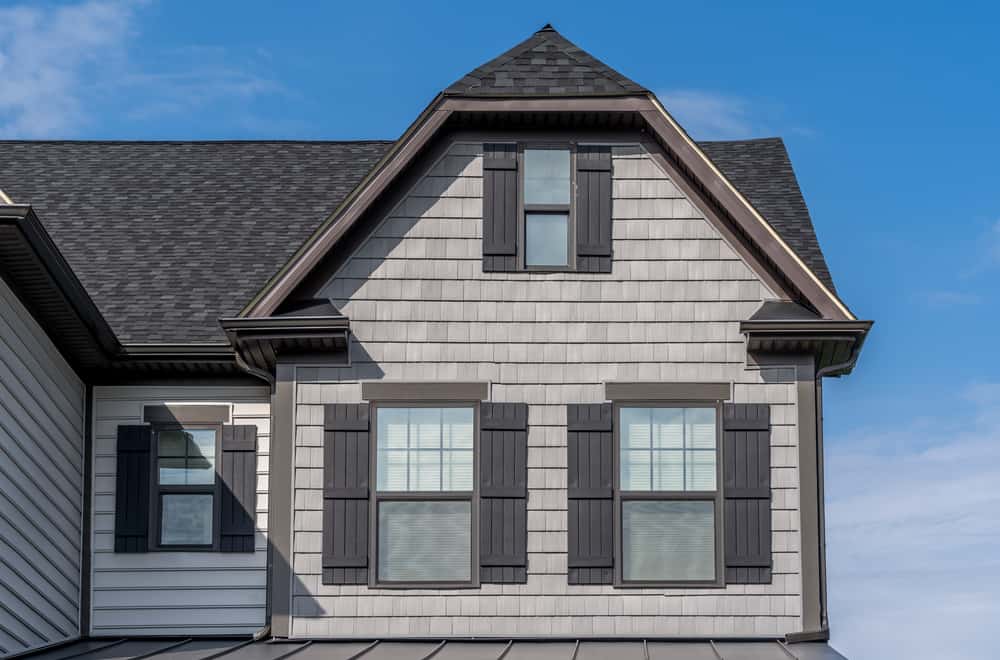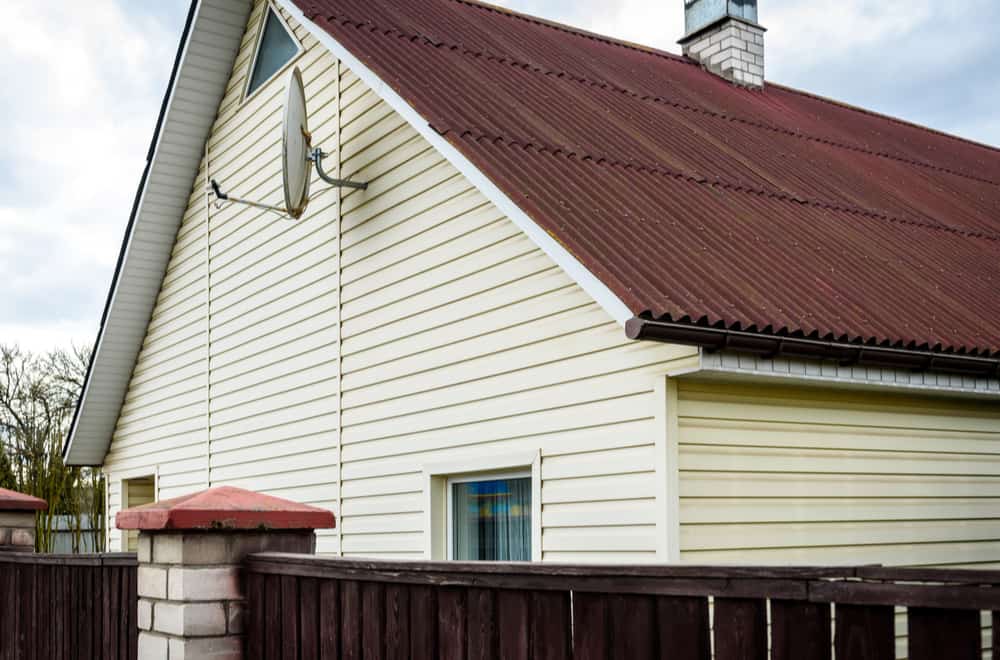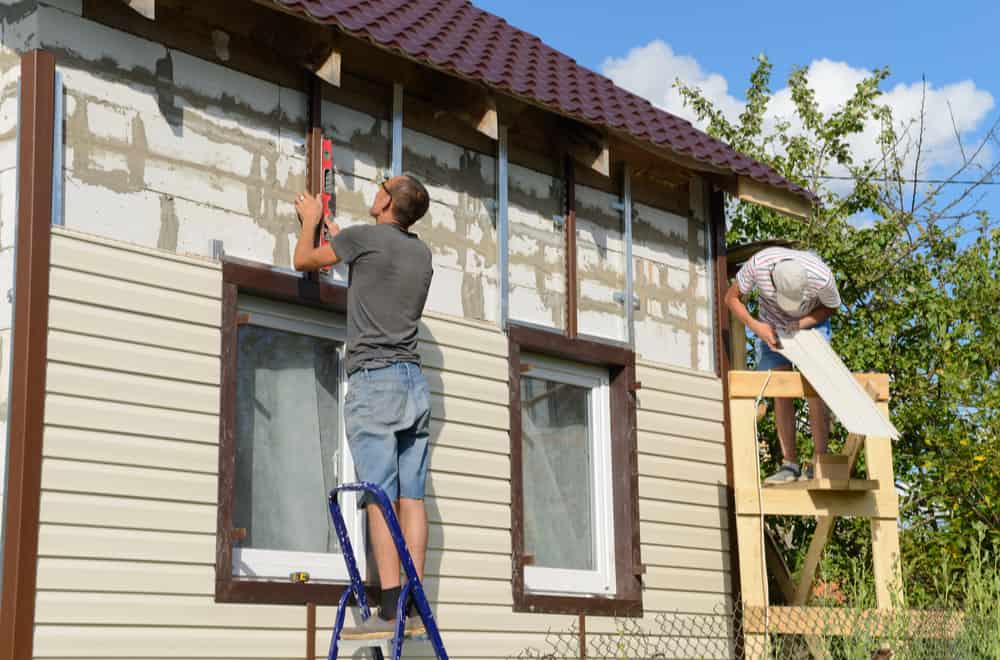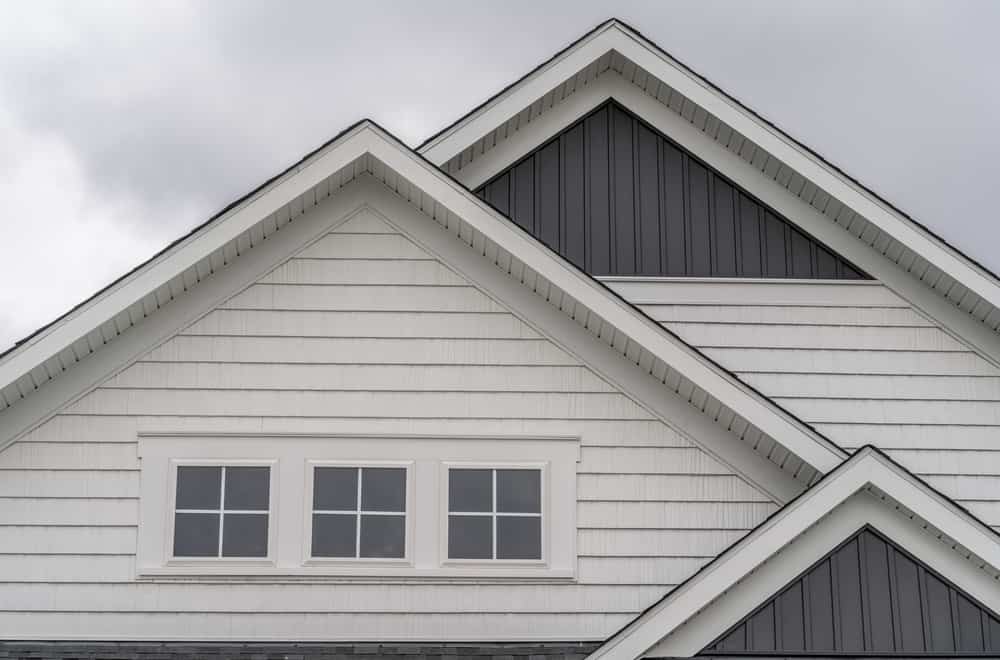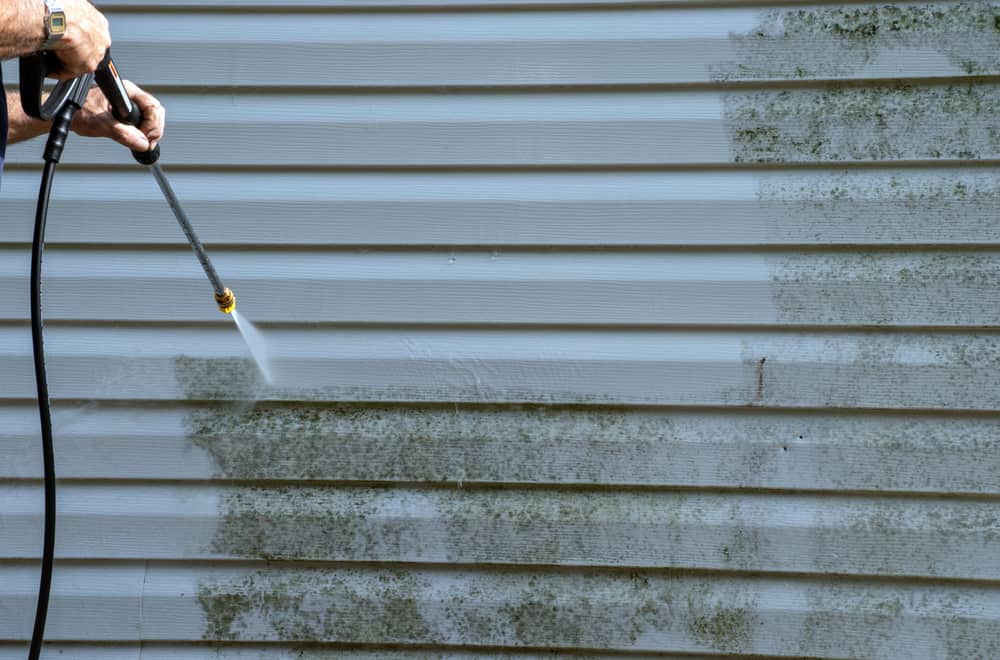The exterior of your home gives the first impression of your living conditions to others. Your home’s curb appeal is a bold statement that places a rudimentary value on your property.
More importantly, the exterior of your home is what you see as you pull into your driveway after a long day at the office. I imagine that you want your home to be welcoming, aesthetically pleasing, and functional.
So, should you install clapboard or vinyl siding? Let us discuss price, ease-of-installation, eco-friendliness, functionality, expected lifetime, and care and maintenance of each below.
Table of Contents
What is Clapboard
Clapboard, also known as ‘lap’ siding, is a classic choice for exterior finishes. Other names commonly used for this type of cladding (siding) are bevel siding or weatherboard. The overlapping nature of its installation makes this siding a time-tested favorite due to its ability to withstand the elements.
Clapboard is installed in layers, like shingles, in a horizontal fashion that prevents rain and snow from blowing into the frame or house itself. The word clapboard comes from “klappen,” a Dutch word meaning “to fit.”
Clapboard siding in America dates back to the colonial period. With its unique installation, log splitters found a solution to shelter themselves and family against brutal temperatures, gusting winds, heavy rains, and dense snowfalls.
Clapboard manufacturers typically use softwoods such as pine, cedar, oak, and spruce. However, hardwoods (such as ipe, teak, cumaru, massaranduba, etc.) can also be a popular choice if your budget allows it. Finally, did you know that clapboard can be “stained, painted, charred, or allowed to naturally weather?”
What is Vinyl Siding
According to HGTV’s Scott McGillivray, vinyl siding is “one of the most popular choices for homes across North America.” It may not be the most flattering option on the market; however, its price point-endurance combination makes it hard to pass over.
Vinyl siding is a human-engineered composite known as polyvinyl chloride, a very durable plastic. Vinyl siding resembles wood grain and “doesn’t dent, rot, or corrode, and is impervious to water. ”
In addition to its durability, you can request your vinyl siding to mimic various looks, including dutch lap, beaded, shingles, verticle, and even decorative siding.
* * *
By this point, you should know at least some basic differences between clapboard and vinyl siding. So let us take a closer look at some more fundamental differences between these two siding options to prepare you for the decision you soon have to make.
Clapboard vs Vinyl Siding: Which is Better for Your House?
1. Price
With every decision, there are usually many factors you need to consider. As a homeowner, you know that budget concerns can make or break a project.
If you plan to begin your siding project this year, note that manufacturers have raised material costs 5%-10% because of increased demand.
You can expect to pay between $3.00-$12.00 per square foot for vinyl siding, depending on the style and quality that you choose.
On the other hand, wood siding can range from $1.00-$15.00 per square foot, depending on if you decide on softwood or tropical hardwood.
In addition to the average material costs listed above, you need to consider the costs of care and maintenance, labor, plus the tools or supplies required if you choose a DIY install.
2. Installation
As a homeowner, you can save quite a lot of money if you do it yourself. Hands down, vinyl siding, is much easier to install than clapboard. Once you nail the bottom row into place, the additional rows lock into each other as you install from bottom to top.
Furthermore, you can complete a vinyl siding installation project without acquiring specialty tools if you have a standard measurement tape, utility knife, and a reliable pair of tin snips.
HomeAdvisor notes that the current market price for a professional installation of a 1,200 square feet home of vinyl siding will be approximately $4,440 in labor.
On the other hand, clapboard requires a higher degree of skill for proper installation. Although the material itself is more expensive on average, labor costs are relatively comparable to vinyl.
For example, it will cost anywhere between $2,000 and $5,000 for 1,500 square feet of professional installation. So, remember to get 2-3 estimates before deciding on a suitable contractor.
If you choose to install clapboard siding by yourself, the layout is the most critical step. Your project will run smoother by investing in a table saw, miter saw, and a nail gun.
If you choose to proceed with the tools you already have in your tool closet, a measurement tape, hammer, level, and circular saw will get the job done.
3. Eco-friendliness
The impact that we place on the environment is a crucial element that also deserves careful consideration. Of the two materials, wood siding may have a lesser impact on the environment because it is a natural resource that is renewable if forest protection plans are in place.
You can take steps like ensuring that the clapboard material that you select is locally harvested and comes certified by the Forest Stewardship Council (FSC).
On the other hand, vinyl siding is a type of plastic material. Although manufacturers are constantly improving processes to lower VOC emissions, the production of polyvinyl chloride still releases chemicals into the atmosphere.
Under certain conditions, these released chemicals can be damaging to both human health and to our environment. If vinyl is not recycled correctly, it will remain in its solid state and ending up in landfills.
4. Functionality
Are you trying to decide which material would be best for siding? If so, you are probably designing your new home, remodeling an investment property, or needing to replace or upgrade the siding on your current home.
The siding material that you choose should be suitable for the climate in that you live. For example, vinyl’s excellent repellent qualities would be an ideal solution for wet and humid areas.
However, vinyl also has its own set of limitations and vulnerabilities. For example, vinyl can fade if exposed to the sun regularly, and it is more prone to cracking and bending if placed in windy and extremely hot or cold climates.
Clapboard is a classic choice and can usually withstand harsher climate conditions than can vinyl. Ideally, clapboard is best suited for dryer climates since wood can warp under highly humid conditions.
Replacing the siding on your home will refresh its curb appeal regardless of the material used. By choosing to upgrade your siding, you can easily make your home one of the most attractive in the neighborhood.
If you are mainly concerned with a return on investment, then your analysis should be more in-depth. For example, if you live in a historic section of town, vinyl siding could bring down the value of your home.
5. Expected Lifetime
If you meticulously maintain your wood siding by painting or staining it every three to five years, it can last 20-40 years or longer.
Depending on its quality, vinyl siding can also last between 20-40 years.
The longevity of your siding material ultimately depends on proper care and maintenance.
Generally speaking, clapboard will last longer, although its maintenance and upkeep over its lifespan will be more involved and thus more expensive.
6. Care and Maintenance
Vinyl siding is relatively simple to maintain. To prevent dust and dirt build-up, you can adopt a simple routine of rinsing off your siding with your garden hose.
For mold removal and more stubborn stains, you will need to employ a soft bristle brush along with a gentle cleaning solution. Please remember first to consult your vinyl siding manufacturer for approved cleaners. However, a tried and tested method of cleaning for vinyl siding is pressure washing.
Although pressure washing is the quickest and most effective tool to clean vinyl siding, you must proceed with caution. The speed and power delivered by this tool can be dangerous to both yourself and your siding surface.
Clapboard, on the other hand, needs to maintain a sealed surface. To do this, you should thoroughly inspect your home every couple of years for weathered wood, cracks, and peeling paint.
Furthermore, pests can cause unnecessary damage if your wood siding does not maintain a proper seal. Pests are not a concern that you will have to stress over with vinyl siding unless installed improperly.
To make sure that you do not overlook any damage, you can hire an inspection pro to do this. Inspectors have the advantage of recognizing particular problems associated with various clapboard materials.
In the interim of inspection cycles, clean your siding annually using warm soapy water and a gentle brush. Do so in 20-foot sections working from top to bottom.
What Siding Should You Choose
So, do you feel ready to decide between clapboard or vinyl siding for your home design or improvement project?
Your decision ultimately depends on budget constraints, personal preferences, sustainability, climate conditions, and function.
You should consider your situation and lifestyle as you select a siding material that will complement the style of your house.
Please feel free to comment below with any questions or concerns about choosing a long-term siding solution for your home.
